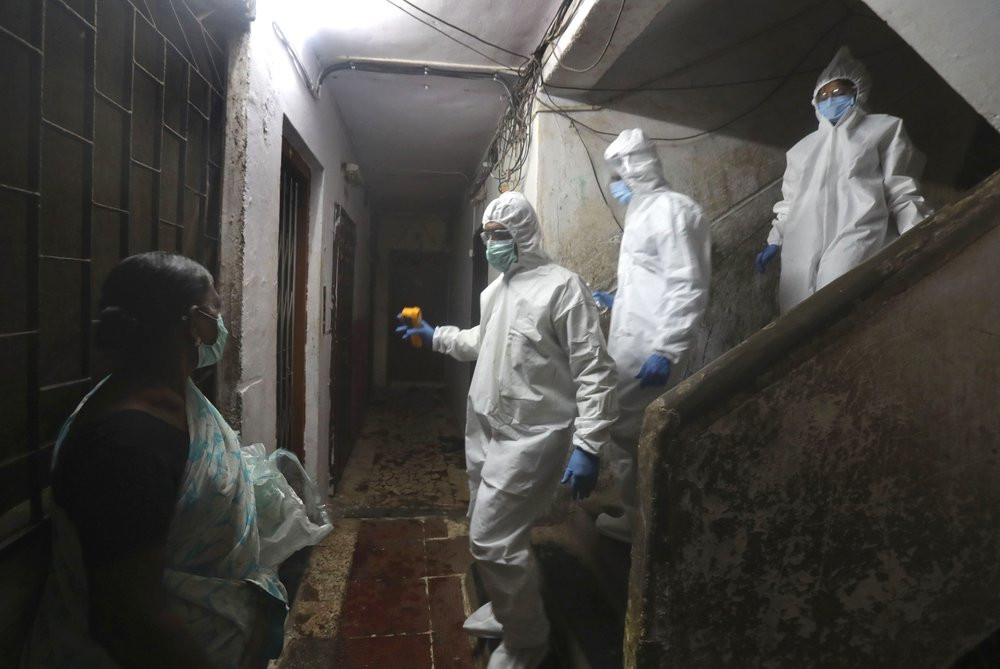India reported more than 40,000 new cases of the coronavirus on Monday, a record high for the country.
The 40,425 new cases raised India’s total to 1,118,043, including 27,497 deaths.
The ministry said late Sunday that India’s coronavirus fatality rate — currently at 2.49% — is “progressively falling” due to an effective containment strategy and aggressive testing.
A country of 1.4 billion people, India has been conducting nearly 10,000 tests per million people. More than 300,000 samples are being tested every day now, compared to just a few hundred in March, according to the Indian Council of Medical Research, India’s top medical research body.
With a surge in infections in the past few weeks, local governments in India have been ordering focused lockdowns in high-risk areas.
South Korea, on the other hand, has reported its smallest daily jump in local COVID-19 transmissions in two months as health authorities express cautious optimism that the outbreak is being brought under control.
South Korea’s Centers for Disease Control and Prevention on Monday still reported 26 newly confirmed cases of the coronavirus, including 22 that were tied to international arrivals.
Vice Health Minister Kim Gang-lip said during a virus briefing that the four local transmissions represented the first time that such infections came below 10 since May 19. He continued to plead for vigilance, encouraging people to avoid crowded places or even stay at home during the summer holiday period.
Officials consider imported cases as a lesser threat than local transmissions because the country is mandating COVID-19 tests and enforcing two-week quarantines on all people arriving from abroad.
Meanwhile, China says it arrested 5,370 people for various forms of illegal activity related to the coronavirus pandemic between January and June.
More than 40% were charged with fraud, the state prosecutor’s office announced Monday on its official microblog. Another 15% were charged with obstruction of law enforcement, with others accused of producing and selling fake and shoddy goods, creating public disturbances and transporting and selling endangered species.
China has strengthened protection for wild animals following the emergence of the virus, which has been linked to a wet market in the city of Wuhan and is believed to have possibly originated among bats before jumping to humans via an intermediary species such as the anteater-like pangolin.
Australia’s hard-hit Victoria state recorded a third daily COVID-19 tally below a record 428 cases reported last week, but the state government leader said on Monday it was too early to tell what impact a second lockdown was having.
Since 428 cases were reported on Friday, Victoria has recorded 217, 363 and 275 cases on consecutive days.
Victoria Premier Daniel Andrews expected to know on Wednesday what impact a lockdown on Australia’s second-largest city Melbourne and the neighoring semi-rural Mitchell Shire were having. The six-week lockdown will be two weeks old on Wednesday.
“It is a wicked enemy, it is unstable and until we bring some stability to this, I don’t think we’ll be able to talk about a trend,” Andrews said. “I’m certainly much happier to be able to report a lower number than a high one.”
Victoria had conducted more than 1.3 million coronavirus tests among a population of 6.5 million, which represented one of the highest testing rates in the world, he said.
Most students in the lockdown regions returned to online schooling at home after an extended vacation.
A retired judge began an inquiry on Monday into breaches of hotel quarantine in Melbourne that have been blamed for most if not all the new virus spread. Australian citizens and permanent residents are required to self-isolate in hotels for 14 days when they return from overseas.
New South Wales, Australia’s most populous state, reported 20 news cases on Monday.

